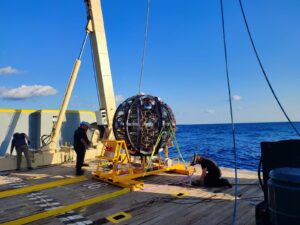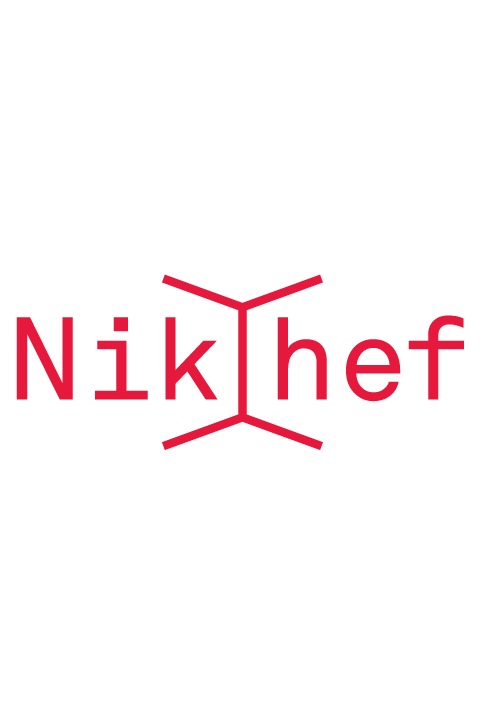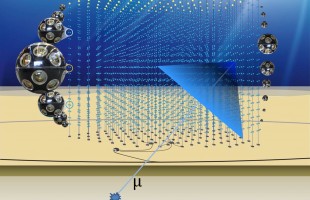The KM3NeT neutrino detector in the Mediterranean deep sea is back on after new detector lines were added last week in the Italian ARCA section. In total, eight lines of light sensors are now active.
Nikhef is closely involved in the design and construction of the deep-sea detector for neutrinos. At two locations in the Mediterranean Sea, lines with light sensors are being installed at great depth, which together can register the passage of particles through the dark seawater.
Over a week ago, a hoist ship sailed out of the port of Malta with five new lines on board for the ARCA sector near Sicily. Six lines were already on the seabed there, connected to the coast via data cables.

During the deployment campaign at sea, three new lines were placed at a depth of 3.5 kilometers, connected with an unmanned submarine and unwound to their full length of 700 meters. This brings ARCA to nine detector lines. Eventually, this should become about 300.
One of the nine lines does not yet take measurements, because the contact on the bottom has a technical defect. During the next campaign, the connection box on the seabed will be replaced.
In this deployment, Nikhef PhD student Rasa Muller was involved in the operations at sea from the shore, where she maintained communications and tested the systems. On Twitter, she reported on the progress.
The placement campaign threatened to be halted halfway through due to rough seas, but was eventually able to continue. Two of the five lines were not placed due to a technical problem; they will be brought to the seabed in the next round, it is expected.
At Nikhef in Amsterdam, spheres with light sensors for KM3NeT and detector lines are assembled in a special workshop. These will be placed on special unwind spools by colleagues in France and Italy to allow them to be sunk to the seabed.
The KM3NeT detector with a total of more than 400 mines will be built up gradually over the next few years. In October, ORCA will receive seven more new lines. KM3NeT will be the largest detectors of its kind in the northern hemisphere. In the southern hemisphere, it is ICECUBE in the ice at the South Pole.

